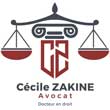ASL and co-ownership in France: 5 key differences to know
1. Legal status:
– The ASL is an organization governed by the law of June 21, 1865 and the decree of December 18, 1927. It has legal personality and can take legal action.
– The co-ownership is governed by the law of July 10, 1965 and its implementing decree of March 17, 1967. It does not have a legal personality distinct from that of the co-owners.
2. Scope of application:
– The ASL manages assets and equipment common to several individual properties, such as roads, networks, green spaces, etc.
- The co-ownership applies to a building or a group of buildings whose ownership is divided between several people in lots, each comprising a private part and a share of the common parts.
3. Creation and membership:
– The ASL is created by an authentic act (notarial deed) or by private deed. The owners' membership is voluntary but binds successive purchasers.
- The co-ownership is created automatically as soon as a building or a group of built buildings is divided into lots. Each co-owner is member by right of the condominium union.
4. Management bodies:
– The ASL is administered by a union composed of all the owners, who elect a president and a union council. Decisions are taken in general meeting.
– The co-ownership is managed by a syndicate of co-owners, which appoints a trustee (professional or volunteer) to carry out the decisions taken in general meeting.
5. Distribution of charges:
– In the ASL, the distribution of charges is defined in the statutes according to freely chosen criteria (surface area, use, etc.).
– In the co-ownership, the distribution of charges is fixed by the co-ownership regulations based on the shares of common areas attached to each lot (percentages).
In summary, although ASL and co-ownership have similarities in their operation, they differ in their legal status, their scope of application, their methods of creation and membership, their management bodies and the distribution of charges between the owners.
